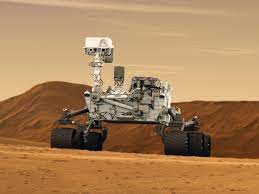The double-binary star system HD74438 was a peculiar find when it was discovered in 2017. Two pairs of very close-binary stars orbit each other in a rare quadruple star system. This is already incredibly cool but astronomers believe there is more. Simulations suggest that these kinds of set-ups might lead to a specific and rare type of supernova.
One binary pair orbits each other every 20 days or so. The other every four days. Each pair orbit each other in about six years, making HD74438 the quadruple star system with the shortest period. It’s also the youngest, with an estimated age of 43 million years. But simulations published in Nature Astronomy look at the future of the system rather than the past.
The outer binary pair is changing the eccentricity of the inner one, making the orbit less like a circle and more oval. The simulations show that this effect might lead to one or more stellar collisions, and from there to white dwarfs going supernova.
“A star like our Sun will end its life as a small dense dead star known as a white dwarf, and the mass of white dwarfs cannot go above the so-called Chandrasekhar limit (about 1.4 times the mass of the sun),” co-author Associate Professor Karen Pollard from the University of Canterbury said in a statement.
“If it does, because of mass transfer or merger events, it can collapse and produce a thermonuclear supernova. Interestingly, 70% to 85% of all thermonuclear supernovae are now suspected to result from the explosion of white dwarfs with sub-Chandrasekhar masses. As a result of mass transfer or mergers, these white dwarf stars can explode as a thermonuclear supernova explosion.”
Thermonuclear supernovae, also known as Type Ia (pronounced one-A) are very important for cosmological studies. They tend to explode with roughly the same luminosity, which makes them ideal standard candles. Given that the brightness of an object scales with its distance, if you know the actual luminosity of an event and compare it to the brightness you measure on Earth, you can work out how far away it is.
While they are an invaluable method for distance estimates, the limits of our understanding affect these measurements. And that’s why it’s important to study these objects. But that’s not all. Quadruple stars system make up a few percentages of all multiple star systems, so if they are all doomed to turn into supernovae, they will play a role in forming a certain amount of the heavy elements in the universe.
You may like to read:











